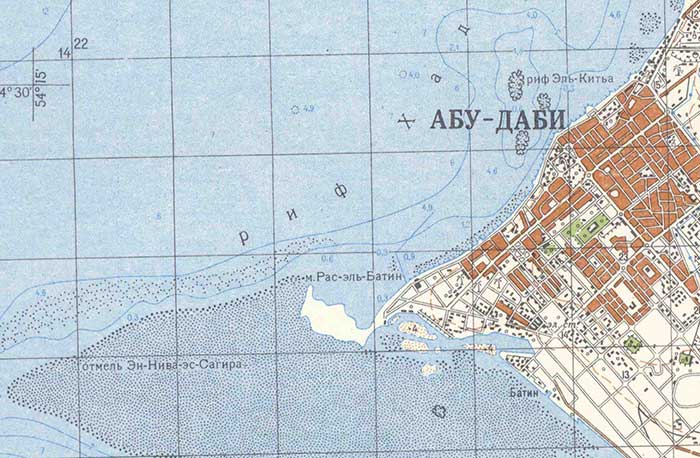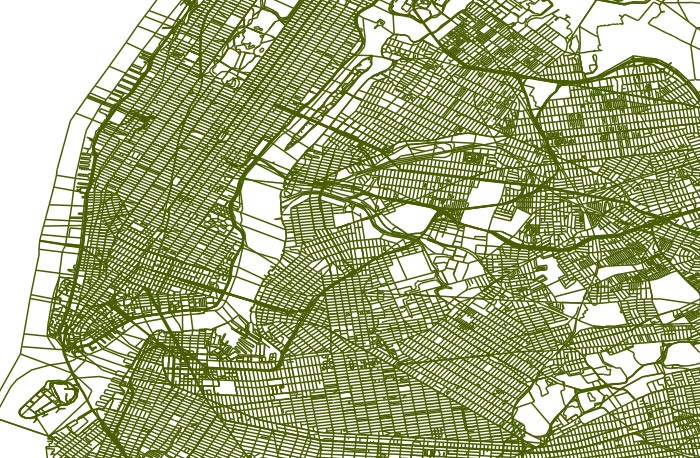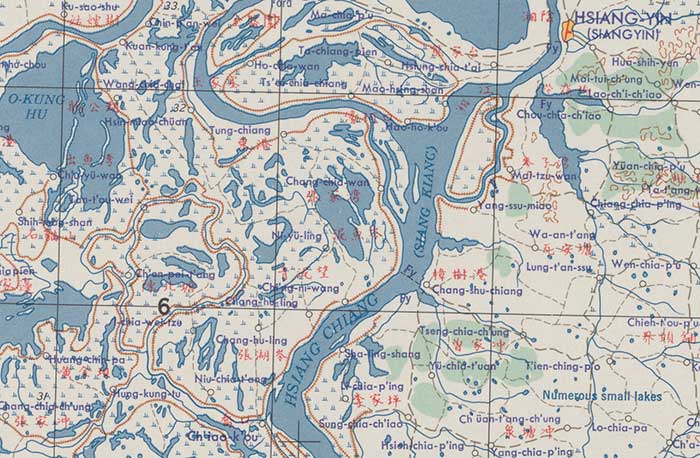View Metadata
Global GIS : World faults
- Identification Information
- Data Quality Information
- Spatial Data Organization Information
- Spatial Reference Information
- Entity and Attribute Information
- Distribution Information
- Metadata Reference Information
- Identification Information
- Citation
- Originator
- Environmental Systems Research Institute (Redlands, Calif.)
- Originator
- Geological Survey (U.S.)
- Publication Date
- 2003
- Title
- Global GIS : World faults
- Geospatial Data Presentation Form
- vector digital data
- Collection Title
- Global GIS : global coverage
- Series Information
- Publication Information
- Publication Place
- [Alexandria, VA]
- Publisher
- American Geological Institute
- Online Linkage
- https://hgl.harvard.edu/catalog/harvard-glb-faults
- Abstract
- This datalayer is a polyline coverage representing earthquake faults worldwide. It was originally produced by ESRI and the USGS for the Global GIS database. This layer was originally derived from ESRI's ArcAtlas: Our Earth CD-ROM publication (1996). Attribute data includes information on the type of fault. A fault, also known as a disjunctive dislocation, is a break in the continuity of a geological formation. Faults can be formed when the earth's crust is compressed or stretched. They vary greatly in size, both in length and depth. Faults are classified according to the type and direction of movement of the rocks on either side of the fault. For example, a fault along which no appreciable movement has occurred is called a joint. Faults with appreciable movement include vertical faults, thrust faults, transcurrent faults, and displacements. ArcAtlas: Our Earth contains global geographic and attribute data at three scales (1:10,000,000 for Europe, 1:20,000,000 for North and South America, Africa and Antarctica 1:25,000,000 for Asia and Australia). The USGS Global GIS database contains a wealth of USGS and other public domain data, including global coverages of elevation, landcover, seismicity, and resources of minerals and energy at a nominal scale of 1:1 million. The U.S. Geological Survey (USGS) and The American Geological Institute (AGI) announced a cooperative agreement that will focus on making the USGS Global Geographic Information System (GIS) database readily available to educators and the general public in the form of a DVD based world atlas.
- Purpose
- This layer is intended for researchers, students, and policy makers for reference and mapping purposes, and may be used for basic applications such as viewing, querying, and map output production. This layer will provide a basemap for layers related to geomorphology or geological analysis, statistical enumeration and analysis, or to support graphical overlays and analysis with other spatial data. More advanced user applications may focus on urban and rural land use planning and related areas including defining boundaries, managing assets and facilities, integrating attribute databases with geographic features, spatial analysis, and presentation output.
- Supplemental Information
- Portions of this metadata are taken directly from the American Geological Institute, Global GIS, Web pages: http://www.agiweb.org/pubs/globalgis/ The highest density of faults revealed by relief is found in the zones where the lithospheric plates meet. The zones are called suture zones and are zones of active mountain folding. Rift faults are found in divergence zones. On the continents, these zones include the east African rift zone where the African plate is separating from the Somali plate, the Baykal rift zone that divides the Eurasian plate and the Amur plate, and the Mom rift zone that divides the Eurasian plate and the North American plate. A high density of deep faults revealed by present-day relief is found in the collision zone between the Eurasian plate and the African and Indo-Australian plates. Most faults are deep and seismic. They are related to the complex mountain relief of the African-Eurasian belt extending from Gibraltar to southeast Asia, sometimes called the Thetys Belt. The density of faults within the continental plates is much higher on shields and lower in areas with platformian mantles.
- Temporal Extent
- Currentness Reference
- publication date
- Time Instant
- 1996
- Bounding Box
- West
- -165.000000
- East
- 161.500000
- North
- 82.151230
- South
- -55.224388
- Theme Keyword
- Faults (Geology)
- Geology, Structural
- Theme Keyword Thesaurus
- LCSH
- ISO Topic Category
- geoscientificInformation
- Place Keyword
- Earth
- Northern Hemisphere
- Southern Hemisphere
- Eastern Hemisphere
- Western Hemisphere
- Africa
- Asia
- Australia
- Europe
- North America
- South America
- Place Keyword Thesaurus
- LCSH
- Temporal Keyword
- Access Restrictions
- Access is granted to licensee (Harvard University) only. Available only to Harvard University affiliates. Affiliates are limited to current faculty, staff and students.
- Use Restrictions
- This file contains intellectual property of Environmental Systems Research Institute, Inc. (ESRI), and are used with their permission. End users are permitted to use these data sets for their own internal use, including derivative work, but are prohibited from using and redistributing these data individually or in a derivative work to third parties. For educational non-commercial use only. Harvard University makes no claims, no representations, and no warranties, express or implied, concerning the validity, the reliability or the accuracy of the GIS data and GIS data products furnished, including the implied validity of any uses of such data.
- Status
- Complete
- Maintenance and Update Frequency
- Unknown
- Point of Contact
- Contact Organization
- Environmental Systems Research Institute, Inc. (ESRI)
- Delivery Point
- 380 New York Street
- City
- Redlands
- State
- CA
- Postal Code
- 92373-8100
- Country
- USA
- Contact Telephone
- 909-793-2853
- Contact Telephone
- 800-447-9778
- Contact Facsimile Telephone
- 909-793-5953
- Contact Electronic Mail Address
- info@esri.com
- Hours of Service
- 8:00 a.m.-5:00 p.m. PST-USA, Monday- Friday
- Native Data Set Environment
- Microsoft Windows 2000 Version 5.0 (Build 2195) Service Pack 4; ESRI ArcCatalog 9.0.0.535
- Collection
- Originator
- American Geological Institute
- Originator
- Geological Survey (U.S.)
- Originator
- Environmental Systems Research Institute (Redlands, Calif.)
- Originator
- Hearn, Paul P.
- Publication Date
- 2003
- Title
- Global GIS : global coverage
- Geospatial Data Presentation Form
- digital data
- Series Information
- Series Name
- U.S. Geological Survey digital data series
- Issue Identification
- DDS-62A-H
- Publication Information
- Publication Place
- [Alexandria, VA]
- Publisher
- American Geological Institute
- Other Citation Details
- 1 DVD-ROM; Developed by the U.S. Geological Survey; Published by the American Geological Institute; by P. Hearn ... [et al.].
- Data Quality Information
- Attribute Accuracy Report
- From ESRI ArcAtlas documentation: The fault maps in this atlas show the relatively large faults that reveal the geological structure of the continents, mainly fold or block structures. The location of faults corresponds to the strike of shifted rocks. Information on two types of tectonic dislocations is also given. The two types are (1) tectonic contacts with dominant vertical dislocations of rocks (mainly faults, upthrust faults, etc.) and (2) tectonic contacts with dominant horizontal dislocations of rocks (thrusts). The morphostructure maps show the largest faults differently revealed by present-day relief. They are borders of mountains and platformian plains, ranges and depressions, various pronounced parts of river valleys, chains of lake depressions, and so on. The attributes on the faults were acquired from the survey maps and regional geological and geomorphological maps that were used to compile the geological and geomorphological maps. The maps were of various scales.
- Logical Consistency Report
- No duplicate features are present. The shapefile is created directly from a topologically correct ArcInfo coverage.
- Completeness Report
- After processing, the data set is checked for drawing display and number of records and file sizes compared with source materials.
- Lineage
- Source
- Originator
- Environmental Systems Research Institute (Redlands, Calif.)
- Publication Date
- 1996
- Title
- ArcAtlas : our earth
- Geospatial Data Presentation Form
- digital data
- Publication Information
- Publication Place
- Redlands, Calif.
- Publisher
- ESRI
- Other Citation Details
- 1 computer laser optical disc
- Type of Source Media
- online
- Source Temporal Extent
- Time Period Information
- Single Date/Time
- Calendar Date
- 1996
- Source Currentness Reference
- publication date
- Contribution
- Source from which data is derived.
- Spatial Data Organization Information
- Direct Spatial Reference Method
- Vector
- Point and Vector Object Information
- SDTS Terms Description
- SDTS Point and Vector Object Type
- String
- Point and Vector Object Count
- 3613
- Spatial Reference Information
- Horizontal Coordinate System Definition
- Geographic
- Latitude Resolution
- 0.000001
- Longitude Resolution
- 0.000001
- Geographic Coordinate Units
- Decimal degrees
- Geodetic Model
- Horizontal Datum Name
- North American Datum of 1927
- Ellipsoid Name
- Clarke 1866
- Semi-major Axis
- 6378206.400000
- Denominator of Flattening Ratio
- 294.978698
- Vertical Coordinate System Definition
- Altitude System Definition
- Altitude Datum Name
- Unknown
- Altitude Resolution
- 1.000000
- Altitude Distance Units
- Unknown
- Altitude Encoding Method
- Explicit elevation coordinate included with horizontal coordinates
- Entity and Attribute Information
- Entity Type
- Entity Type Label
- Global GIS Fault Lines
- Entity Type Definition
- Lines represent earthquake faults
- Entity Type Definition Source
- ESRI
- Attributes
- TYPE
- Type of Fault
- tectonic contact
- thrust-fault
- step
- rift
- Definition Source
- ESRI
- OBJECTID
- Internal feature number. (Sequential unique whole numbers that are automatically generated.)
- Definition Source
- ESRI
- LENGTH
- Feature length
- Definition Source
- Computed
- DUP
- AUTONUMBER
- MOD
- SHAPE
- Feature geometry. (Coordinates defining the features.)
- Definition Source
- ESRI
- SHAPE.LEN
- Polyline length measured in map units (Positive real numbers that are automatically generated.)
- Definition Source
- Computed
- Distribution Information
- Format Name
- Shape
- Distributor
- Harvard Geospatial Library
- Online Access
- http://hgl.harvard.edu/
- Name
- Metadata Reference Information
- Metadata Date
- 20060117
- Metadata Contact
- Contact Information
- Contact Organization Primary
- Contact Organization
- Harvard Geospatial Library
- Contact Position
- Geospatial Resources Cataloger
- Contact Address
- Address
- Harvard University Library
- Address
- Office For Information Systems
- Address
- 1280 Massachusetts Avenue
- City
- Cambridge
- State or Province
- MA
- Postal Code
- 02138
- Country
- USA
- Contact Voice Telephone
- 617-495-2417
- Contact Facsimile Telephone
- 617-496-0440
- Contact Electronic Mail Address
- hgl_ref@hulmail.harvard.edu
- Hours of Service
- Monday - Friday, 9:00 am - 4:00 pm EST-USA
- Metadata Standard Name
- FGDC Content Standards for Digital Geospatial Metadata
- Metadata Standard Version
- FGDC-STD-001-1998
- Metadata Extensions
- Online Linkage
- http://www.esri.com/metadata/esriprof80.html
- Profile Name
- ESRI Metadata Profile


